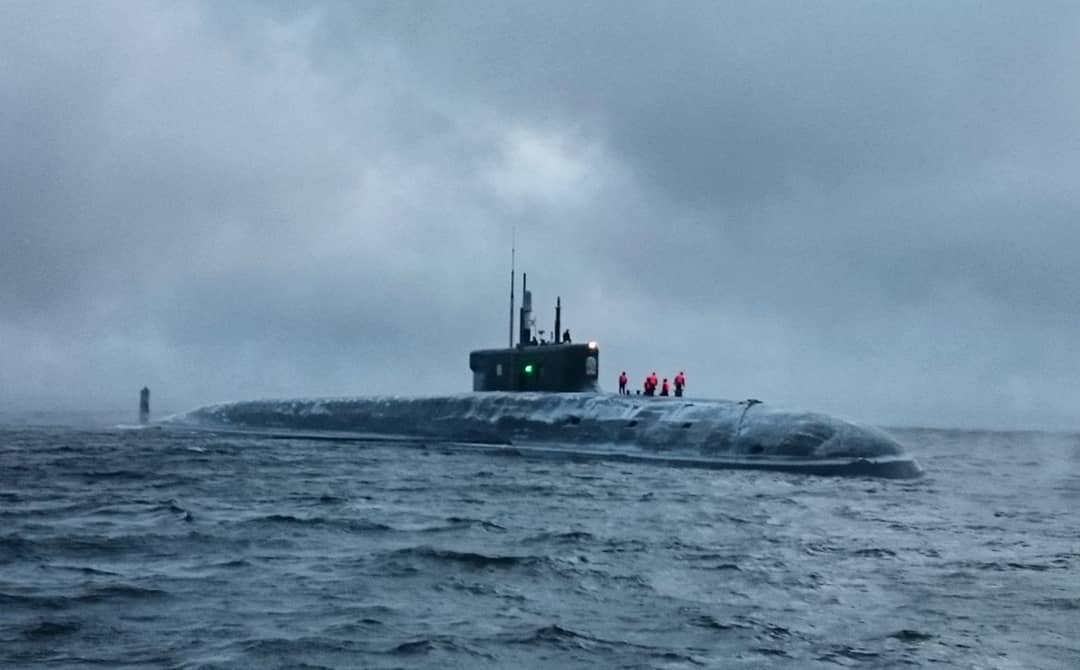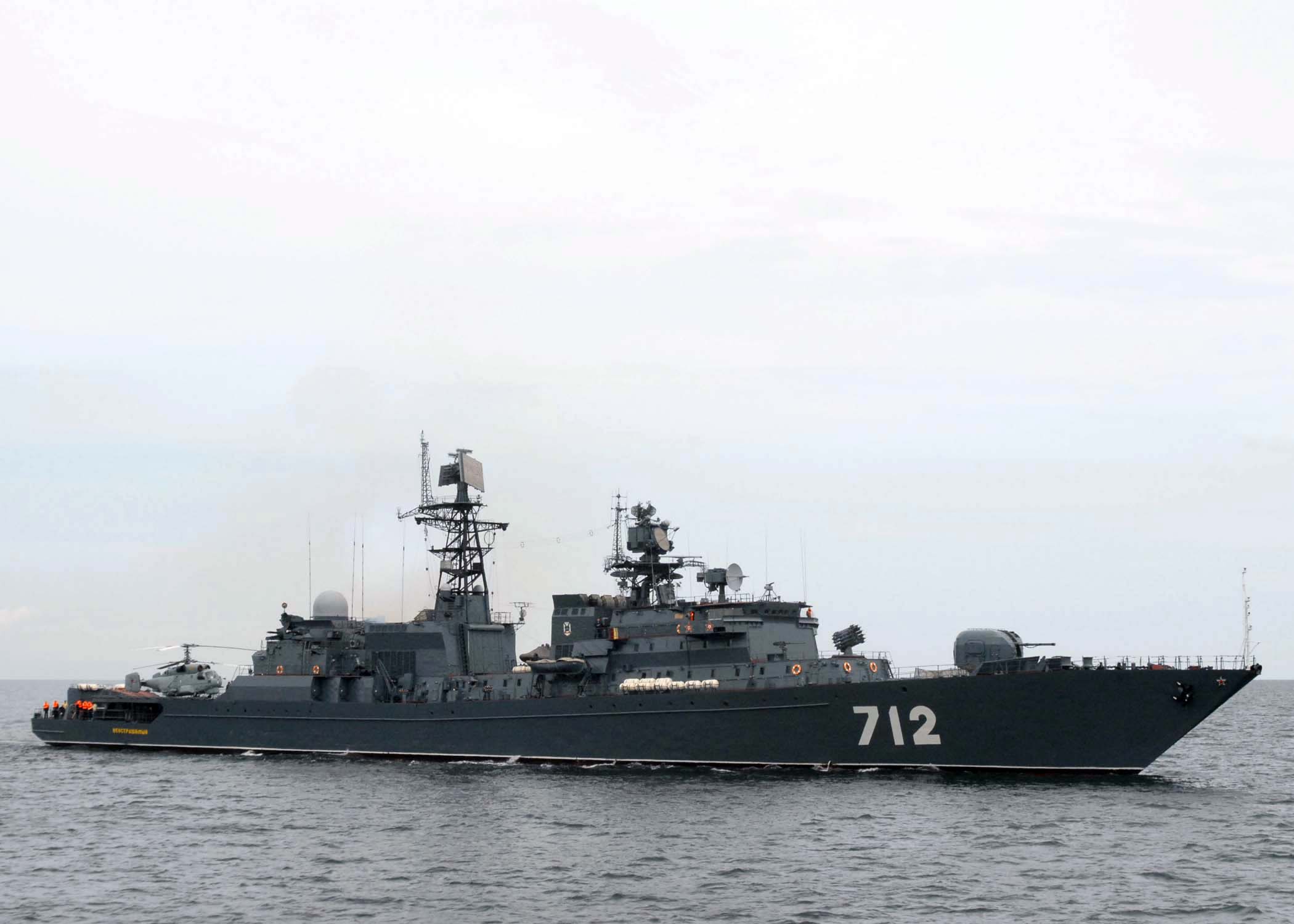Spy ships, nuclear submarines, landing ships and frigates. Danish Rockwool has systematically and deliberately supplied the Russian navy with hundreds of thousands of square meters of ship insulation used in some of the most advanced vessels in the Russian navy.
This is revealed by a comprehensive review of Russia’s official tender database, which Danwatch and Ekstra Bladet have conducted over several months.
In total, there is evidence that since Russia’s illegal annexation of Crimea in 2014, Rockwool ship insulation has been sold at least 52 times to a total of 31 different vessels in Putin’s fleet. These include two destroyers, two submarines that can be equipped with nuclear weapons, two landing ships, three frigates, six minesweepers and five reconnaissance vessels – in other words, warships and spy ships at the very heavy end of the Russian naval arsenal.
Together, the list represents a sizable portion of Russia’s active fleet, which in July 2023 is estimated to consist of 297 warships, submarines and other military vessels.
In 29 of the cases, sales were made through Rockwool’s official partner and distributor, Marine Complex Systems LLC (MKS), a company that specialises in servicing the Russian military.
To better understand the type of vessels Rockwool has supplied insulation to, we asked Commander and Military Analyst at the Centre for Military Studies at the University of Copenhagen, Jens Wenzel Kristoffersen, to comment on their role in the Russian navy:



Destroyer, project 11551
“Admiral Chabanenko” (650) of the Northern Fleet
Destroyer, project 1155
“Marshall Shaposhnikov” (543) of the Pacific Fleet
Several of the ships have since played a role in the current war in Ukraine. This applies to the six ships belonging to the Black Sea Fleet, but for example, the landing ship “Pyotr Morgunov” from the Northern Fleet, to which MKS supplied Rockwool products worth 48 million rubles (approx. DKK 4.5 million at the time) in 2018, has also been directly involved in the war.
An EU regulation from March 2022 states that the 135-metre-long ship is equipped with an AK-630 cannon and heavy machine gun, among other things:
“The large landing ship “Pyotr Morgunov” project 11711, built by United Shipbuilding Corporation, participated in the illegal Russian invasion of Ukraine in 2022.”
Ukrainian military analyst Alexander Kovalenko also confirms to Danwatch and Ekstra Bladet that “Pyotr Morgunov” has played an important role during the war:
“It has been in the Black Sea since the beginning of the invasion of Ukraine. ‘Pyotr Morgunov’ has provided transportation of ammunition, personnel and equipment and has also participated in the mining of the Black Sea,” he says.



Landing ship, project 11711
“Ivan Gren” (010) of the Northern Fleet
“Pyotr Morgunov” (017) of the Northern Fleet
The market for selling insulation to warships is something of which the renowned Danish company has been fully aware. In an official promotional booklet from 2015, which Rockwool translated and distributed in Russia, highlights warships as one of the most common applications for Rockwool’s marine insulation.
Rockwool’s Head of Communications, Michael Zarin, writes in a response to Danwatch and Ekstra Bladet that they are aware that insulation products in “certain cases have been used in Russian naval vessels” and that they have been sold through the Russian subsidiaries’ external distributors.
“Neither ROCKWOOL A/S nor our Russian subsidiaries sell directly to Russian end users and nor do they have a customer relationship with the Russian military,” Michael Zarin writes, among other things.
Rockwool does not want to comment on why the company in Russia continues to work with MKS, which as a company is specialised in servicing the Russian navy. Neither do they want to answer questions about whether the group makes special demands on their distributors in Russia in relation to the end use of their products.


Nuclear-powered ballistic missile submarine, project 955A
“K-549 Prince Vladimir” (825) of the Northern Fleet
According to Jens Wenzel Kristoffersen, a naval captain and military analyst at the Centre for Military Studies at the University of Copenhagen, the number of Russian naval ships with Rockwool is collectively capable of posing “a threat to allied forces at sea, on land and in the air.”
“The collection of ships is assessed to pose a military threat to allied naval vessels, including in relation to special operations, retrieval missions, monitoring, mapping of critical infrastructure and finally in crisis and war situations,” he says.
He particularly highlights the large ships such as the battlecruiser “Admiral Nakhimov” and the two destroyers “Marshal Shaposhnikov” and “Admiral Chabanenko”, all of which, despite being many years old, can still play a major role in future missions.
“Especially the larger units, regardless of age or whether they have undergone midlife updates, as well as the latest nuclear units, pose a particular threat in the Atlantic and to NATO allies,” says Jens Wenzel Kristoffersen.


Special-purpose nuclear-powered submarine, project 09852
“Belgorod” (BS-329) of GUGI, Northern Fleet
Professor Michael Petersen, head of the Russia Maritime Studies Institute at the US Naval War College and a former member of both US military intelligence and the National Security Council, also believes that the many concrete warships are of great importance to Russia’s military.
He emphasises that Russia’s navy has undergone a large-scale modernisation in the years before and after the illegal annexation of Crimea in 2014, and according to him, Danwatch and Ekstra Bladet’s list of naval vessels insulated with Rockwool reflects exactly that development.
“The complete list provides an interesting and concrete insight into the Russian navy’s priorities for the construction and modernisation of surface ships. They reflect an emphasis on power projection, intelligence gathering and coastal defense,” he says.
“In particular, the construction of Project 22350 Gorshkov-class missile frigates is the primary focus in restoring the Russian surface fleet’s global presence and military power. They have carried out Russia’s highest-profile peacetime naval missions, including the first circumnavigation of the globe by a Russian warship since the nineteenth century in 2019.”




Frigate, project 22350
“Admiral Gorshkov” (417) of the Northern Fleet
“Admiral Kasatonov” (461) of the Northern Fleet
“Admiral Golovko” (456) of the Northern Fleet
Back in February this year, the Danish Business Authority initiated an investigation when Danwatch and Ekstra Bladet first revealed Rockwool’s connections to the Russian military.
At the time, it specifically concerned 5 ships equipped with Rockwool insulation, and the Danish Business Authority did not believe there was reason to assume that Rockwool had violated the EU sanctions introduced in connection with the annexation of Crimea.
Tara Van Ho, one of the world’s leading experts on human rights and business at Essex Law School in the UK, emphasises that even if companies are found not to have breached sanctions, they are still obliged to comply with the UN Guiding Principles on Business and Human Rights (UNGPs), which are designed to ensure that companies do not contribute to human rights abuses at any stage of their value chain.
“Rockwool has been behind a kind of systematic practice that is really worrying from a UNGP perspective. It suggests that there is a bigger problem with Rockwool’s screening processes,” she says.


Attack submarine, project 677
“Velikie Luki” (B-587) of the Northern Fleet
“Many or all of these sales may be technically compliant with EU sanctions, but Rockwool was still supplying the Russian military through their official distributors with products necessary for the military’s activities.”
“As soon as Russia invaded Crimea, those sales should have been investigated more thoroughly – what we call enhanced human rights due diligence. That Rockwool continued to allow these sales raises the question of what they have done, and what they are doing now, to ensure that they are not complicit in Russia’s war crimes or crimes against humanity,” says Tara van Ho.
Fernanda Hopenhaym Cabrera, a member of the UN Working Group on Business and Human Rights, which helps implement and advise on the UNGPs, also emphasises that Rockwool is obliged to investigate its sales in Russia.
“Any company that supplies the arms sector with products or operates in areas of armed conflict should conduct enhanced due diligence”.


Frigate, project 11540
“Neustrashimy” (772) of the Baltic Fleet
“Rockwool now has a responsibility to prevent, mitigate and address the potential or actual human rights violations caused by their business or commercial relationships,” says Fernanda Hopenhaym Cabrera and continues:
“This means that Rockwool has a responsibility to decide whether to implement direct preventive measures, withdraw from the region, abandon commercial relationships, or use its influence in the supply chain to prevent and address adverse human rights impacts, based on the results of its extended due diligence, of course.“


Battlecruiser, project 11442M
“Admiral Nakhimov” (080) of the Northern Fleet
Danwatch and Ekstra Bladet have asked Rockwool whether conditions have been imposed on the company’s Russian distributors – and whether the company itself believes that sales to the Russian military comply with the UNGP guidelines.
Michael Zarin, Head of Communications at Rockwool, declines to answer this question, but writes in an email:
“(…) As we have also previously stated, ROCKWOOL has extensive guidelines when it comes to risk assessments and due diligence.”
Despite repeated requests, Rockwool has not been willing to disclose the results of the risk assessments that the company has allegedly carried out in connection with their business in Russia.